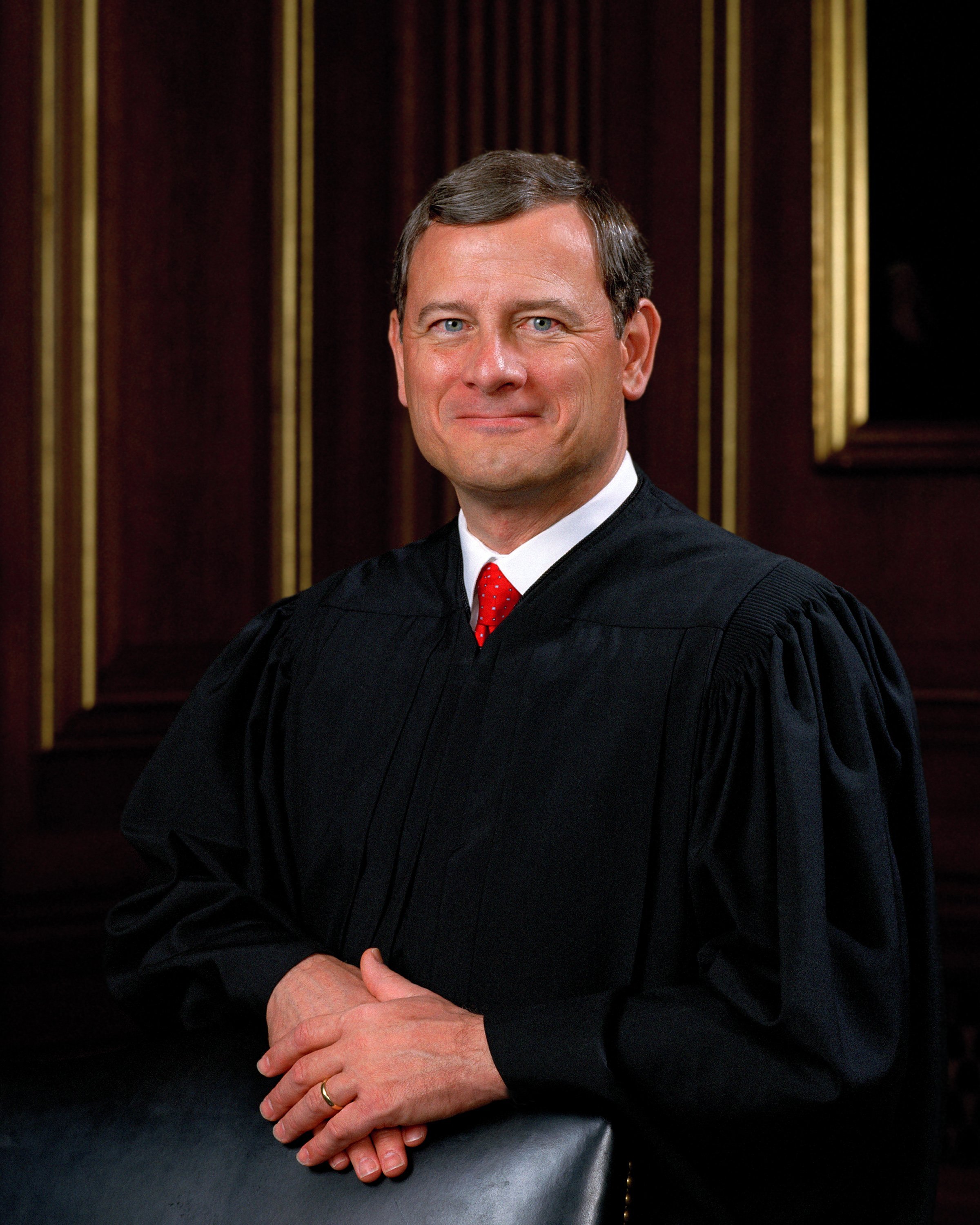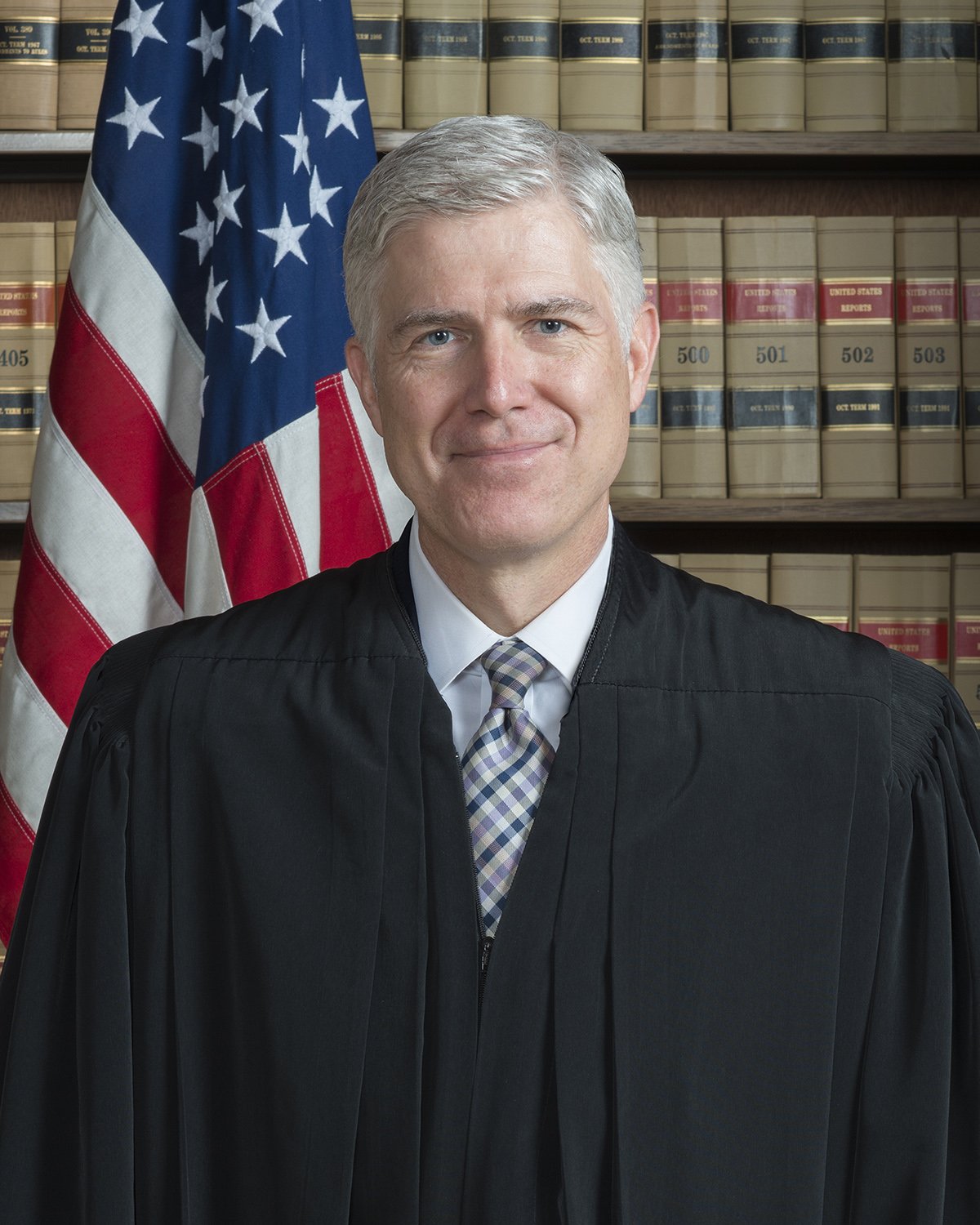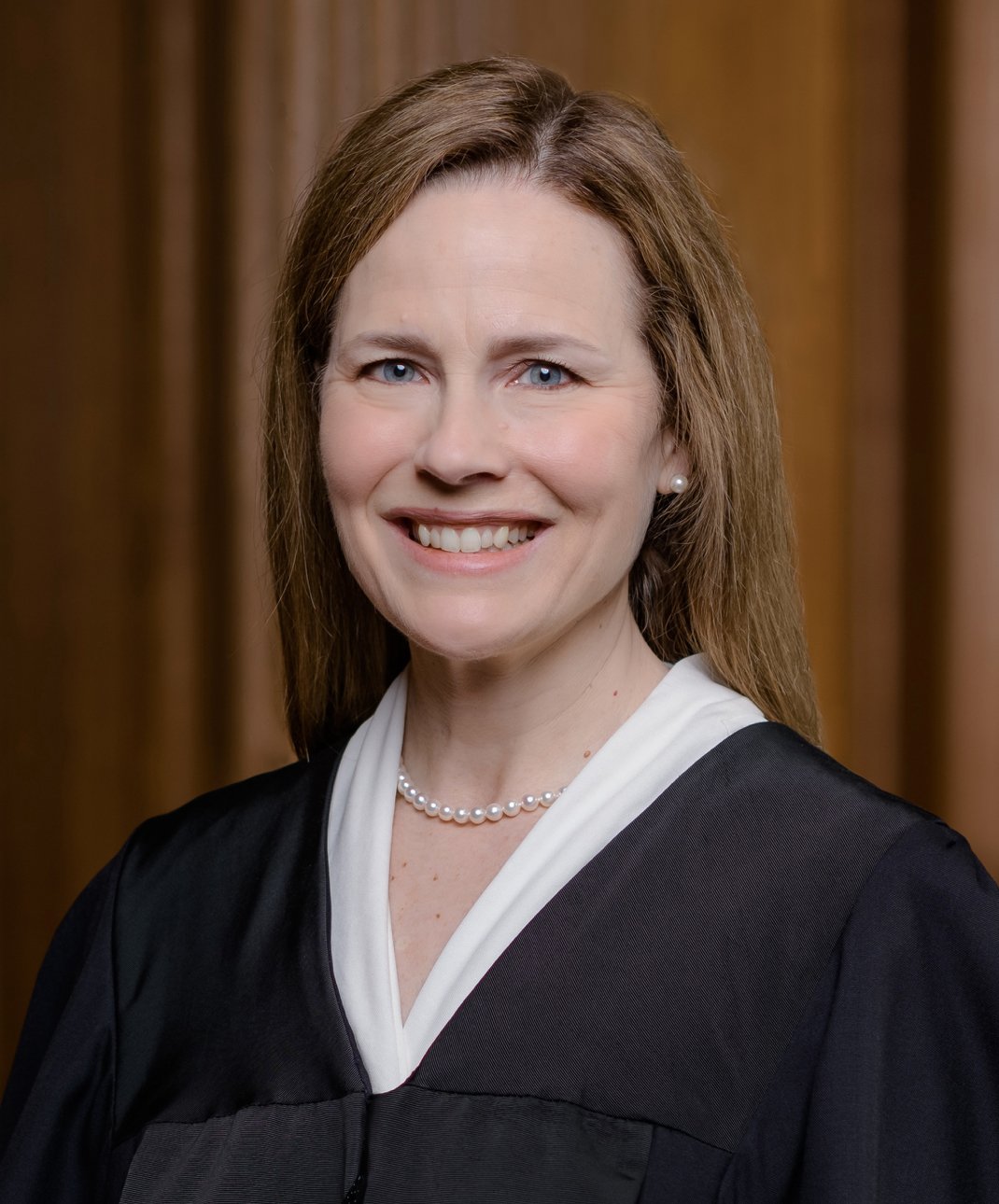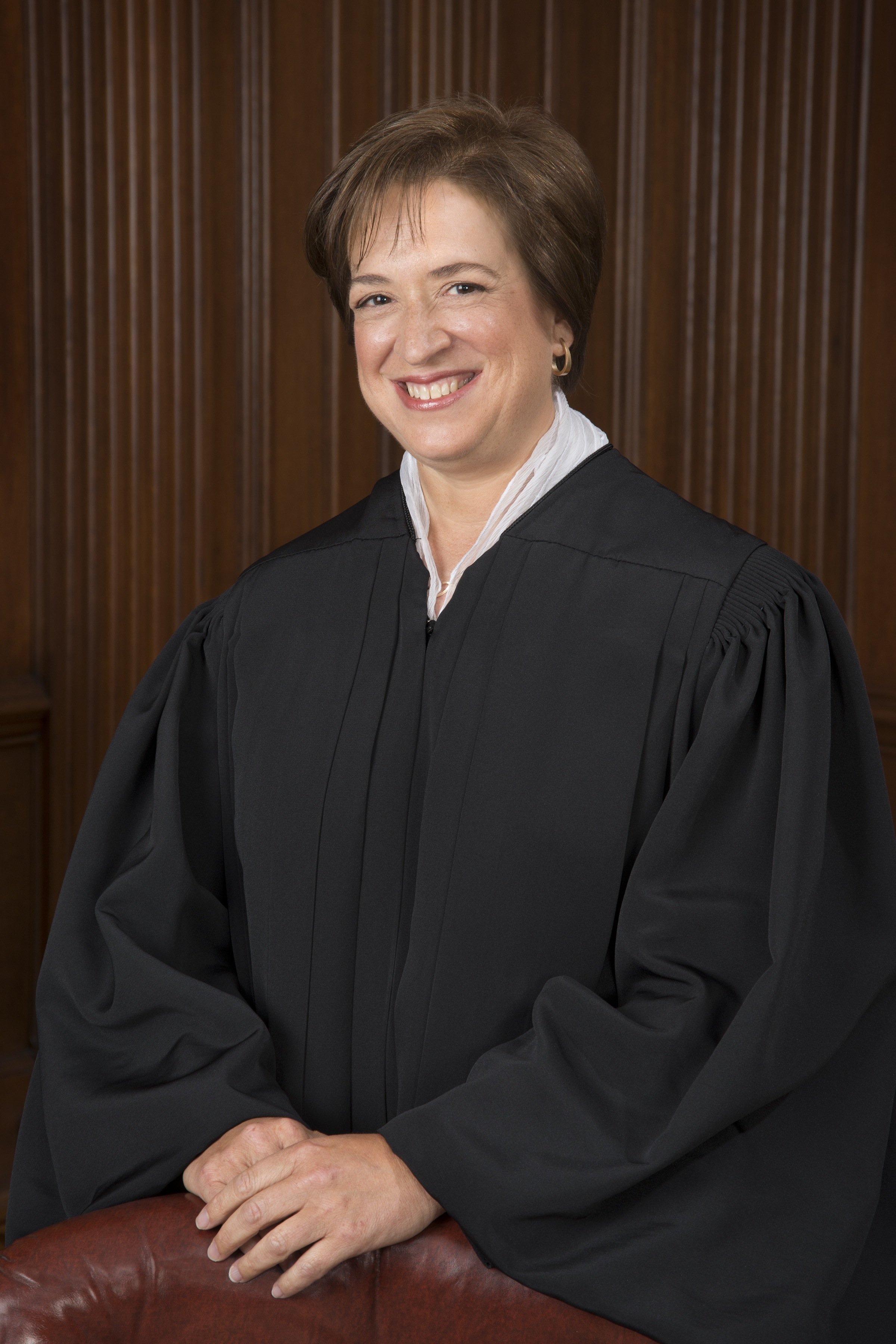New York State Rifle & Pistol
Association v. Bruen
Case Overview
CITATION
597 U.S. 1 (2022)
ARGUED ON
November 3, 2021
DECIDED ON
June 23, 2022
DECIDED BY
Legal Issue
Does the Second Amendment protect the individual right to carry a handgun outside of the home for self-defense?
Holding
Yes, the Second Amendment protects the individual right to carry a handgun outside of the home for self-defense.
Protestor outside of the Supreme Court advocating in support of the petitioners in the case NYSRPA v. Bruen (2022) | Credit: Tom Brenner/Reuters
Background
Since the early 1900s, the State of New York has regulated the public carry of handguns. In 1905, New York made it a misdemeanor for anyone under the age of 16 to have or carry a concealed pistol, revolver, or other firearm without a written license. In 1911, “Sullivan’s Law” was enacted, expanding the prohibition to all handguns, regardless of whether they were concealed. The law was later amended to require individuals to show they were of “good moral character” and had “proper cause” to obtain a permit. New York courts held that an individual only shows “proper cause” if they “demonstrate a special need for self-protection distinguishable from that of the general community” and generally required proof of “particular threats, attacks or other extraordinary danger to personal safety.”
In 2014, Robert Nash applied for an unrestricted license to carry a handgun in public but did not state any unique danger to his safety to prove “proper cause.” The state denied his application but granted him a restricted license for hunting and target shooting only. In 2016, citing a recent string of robberies in his neighborhood, Nash asked a licensing officer to remove the restrictions on his license. His request was denied. In 2017, despite his extensive experience in safely handling firearms, Brandon Koch was also denied his request to remove the restrictions on his license. Koch was only allowed to carry his firearm with him to and from work.
Koch and Nash sued for declaratory and injunctive relief, alleging that their Second and Fourteenth Amendment rights were violated by the requirement to show “proper cause” to remove restrictions from their licenses. The District Court dismissed their complaint, and the New York State Court of Appeals affirmed the decision. The Supreme Court then granted certiorari.
Summary
6 - 3 decision for the New York State Rifle and Pistol Association
NYSRPA
Bruen
Roberts
Thomas
Kavanaugh
Alito
Kagan
Breyer
Barrett
Sotomayor
Gorsuch
Opinion of the Court
Writing for the majority, Justice Clarence Thomas held that the “proper cause” requirement to obtain a firearm violated the Fourteenth Amendment by preventing law-abiding citizens with ordinary self-defense needs from exercising their right to keep and bear arms. He emphasized that the Second Amendment protects an individual’s right to carry a handgun for self-defense outside the home, writing that “[n]othing in the Second Amendment’s text draws a home/public distinction with respect to the right to keep and bear arms.”
Thomas criticized the two-step framework developed by the Courts of Appeals to analyze Second Amendment challenges, which combined history with a means-end scrutiny test. Thomas asserted that this approach was inconsistent with the Supreme Court’s decisions in District of Columbia v. Heller (2008) and McDonald v. Chicago (2010), which emphasized a test rooted in the Second Amendment’s text and history. Thomas explained, “[w]hen the Second Amendment’s plain text covers an individual’s conduct, the Constitution presumptively protects that conduct.”
Thomas argued that the government must demonstrate that firearm regulations are consistent with the Nation’s historical tradition of firearm regulation. He rejected the intermediate scrutiny standard often applied in lower courts, stating, “[t]he very enumeration of the right takes out of the hands of government—even the Third Branch of Government—the power to decide on a case-by-case basis whether the right is really worth insisting upon.”
Thomas reviewed the historical context of public carry regulations, examining laws from the late 1200s to the early 1900s. He concluded that there was no historical tradition justifying New York’s restrictive licensing regime. He noted, “[h]istorical evidence that long predates or postdates either time may not illuminate the scope of the right,” underscoring that the relevant history must align with the understanding of the right when the Second and Fourteenth Amendments were adopted.
In his analysis, Thomas dismissed the respondents’ reliance on English history and early American laws that restricted public carry. He found that such laws were either too ambiguous or did not impose a comparable burden to New York’s “proper cause” requirement. Thomas highlighted that American governments historically did not broadly prohibit the public carry of commonly used firearms for personal defense.
Thomas concluded, explaining that right to keep and bear arms is not a second-class right. He wrote, “[w]e know of no other constitutional right that an individual may exercise only after demonstrating to government officers some special need. That is not how the First Amendment works when it comes to unpopular speech or the free exercise of religion. It is not how the Sixth Amendment works when it comes to a defendant’s right to confront the witnesses against him. And it is not how the Second Amendment works when it comes to public carry for self-defense.”
Concurring Opinion by Justice Alito
In his concurring opinion, Justice Samuel Alito focused on the practical implications of the majority decision and addressed several concerns raised by the dissent. He argued that the right to self-defense is fundamental and that the historical context supports the interpretation that this right extends beyond the home. Alito stated, “[t]he exercise of other constitutional rights does not require individuals to demonstrate to government officers some special need. The Second Amendment right to carry arms in public for self-defense is no different.”
Alito dismissed the dissent's argument that the decision would lead to increased gun violence, arguing that there is no empirical evidence to support the claim that restricting the right to carry firearms reduces crime. Instead, he suggested that law-abiding citizens carrying firearms for self-defense could potentially deter criminal activity. Alito also addressed the historical analysis of gun regulations presented by the dissent. He pointed out that the historical evidence used to justify restrictive gun laws was either ambiguous or not analogous to the current laws in question and emphasized that the Second Amendment’s protection of the right to bear arms is deeply rooted in American history and tradition.
Concurring Opinion by Justice Kavanaugh
In his brief concurrence, Justice Brett Kavanaugh agreed with the Court’s ruling but wrote separately to highlight two issues. First, Kavanaugh explained that the Court’s decision did not prohibit states from imposing licensing requirements to carry a handgun for self-defense. He pointed out that the ruling only addressed the “unusual” discretionary licensing regimes used by six states. Kavanaugh wrote that “New York’s outlier may-issue regime is constitutionally problematic because it grants open-ended discretion to licensing officials and authorizes licenses only for those applicants who can show some special need apart from self-defense.” Second, Kavanaugh noted that when properly interpreted, the Second Amendment allows for a variety of gun regulations, but it is not a “regulatory straightjacket” or “regulatory blank check.”
Concurring Opinion by Justice Barrett
In her brief concurrence, Justice Amy Coney Barrett noted that she fully joined the Court’s opinion but wrote separately to highlight to points unaddressed by the majority. First, Barrett pointed out that the Court does not determine specifically how post ratification practices bear on the original meaning of the Constitution. She highlights several different approaches but wrote that “[t]he limits on the permissible use of history may vary between these frameworks.”
Second, Barrett opined that the Court “avoids” the scholarly debate on whether courts should rely on the understanding of the Second Amendment at the time of its ratification in 1791, or the understanding of it when the Fourteenth Amendment was ratified in 1868. In this case, Barrett explained that the lack of support for New York’s law in either period allowed the court to ignore the question, but she noted the importance of clearly answering the question. Barrett ultimately concluded that “today’s decision should not be understood to endorse freewheeling reliance on historical practice from the mid-to-late 19th century to establish the original meaning of the Bill of Rights. On the contrary, the Court is careful to caution ‘against giving post enactment history more weight than it can rightly bear.’”









